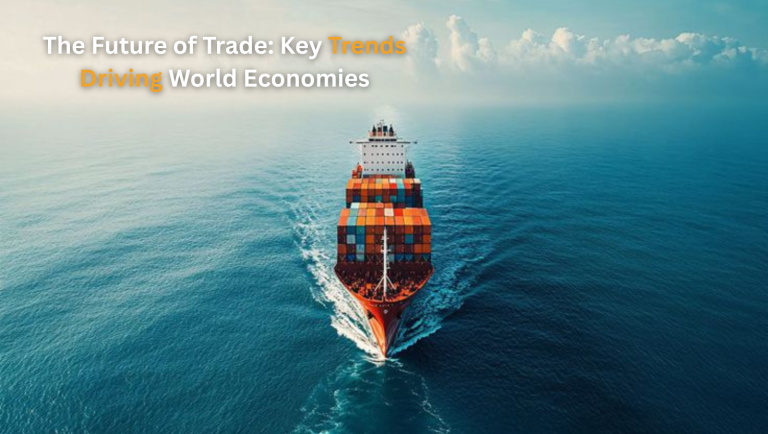omanreport brings you an eye-opening look into how trade is shaping our global future. The world of commerce is no longer just about exchanging goods; it is a living, breathing network of innovation, technology, policy, and shifting consumer demands. Trade has become one of the most influential forces driving economies forward, redefining how businesses operate and how nations interact. If you want to understand where the world is heading, this deep dive into future trade trends will give you clarity, insight, and a powerful edge.
Global Trade Is Transforming at Lightning Speed
The landscape of global trade has undergone more change in the past ten years than in the previous fifty. From digital platforms to supply chain reinventions, everything is accelerating. Businesses are no longer limited by borders — and consumers are demanding more variety, faster delivery, and more sustainable practices.
The Rise of Digital Trade
Digital trade is now the backbone of the global economy. Online marketplaces, e-commerce platforms, and cross-border fintech solutions have created opportunities for businesses of every size. Small and medium-sized enterprises can now sell products globally with minimal investment.
Technology-driven trade also allows companies to collect real-time data, predict demand patterns, and optimize logistics. The future will likely see AI-powered trading systems that handle everything from automated negotiations to instant customs clearances.
The Power of Emerging Markets
Emerging economies are stepping onto the global trade stage with unprecedented strength. Countries across Asia, Africa, and Latin America are no longer just suppliers — they are becoming major consumers, investors, and innovators. This shift is causing a massive rebalancing of trade flows, creating new opportunities for global partnerships.
Sustainability Is Becoming the Core of Trade
As climate change concerns dominate international policy, sustainable trade practices are no longer optional. Green supply chains, carbon-neutral logistics, and eco-friendly manufacturing processes are in demand.
Circular Economy Models
Many industries are shifting to circular economy models, where products are designed to be reused, recycled, or repurposed. This not only reduces waste but also adds a new dimension to trade, as recycled materials and refurbished goods create additional market value.
ESG-Driven Trade Agreements
Environmental, Social, and Governance (ESG) criteria are influencing trade agreements worldwide. Companies that fail to comply with sustainability standards risk losing market access. Governments and international organizations are setting ambitious targets for reducing emissions, making green compliance a competitive advantage.
Technology Is Revolutionizing Supply Chains
The future of trade depends heavily on technology, especially in supply chain management.
Blockchain in Trade
Blockchain technology is revolutionizing how transactions are verified. By creating a transparent and tamper-proof ledger, blockchain reduces fraud, simplifies customs processes, and increases trust between trading partners.
Artificial Intelligence in Logistics
AI and machine learning are transforming how goods move across borders. Predictive analytics can forecast demand, optimize routes, and prevent bottlenecks, making global trade more efficient and cost-effective.
Geopolitics and Trade Policies
Trade wars, tariffs, and shifting alliances play a significant role in shaping the flow of goods.
The Shift from Globalization to Regionalization
While globalization created a highly interconnected world, recent events have shown the vulnerabilities of overly dependent supply chains. Many countries are now focusing on regional trade agreements to ensure resilience and security.
Trade Agreements of the Future
Future trade deals will likely be more inclusive of digital products, services, and intellectual property rights. These agreements will reflect the growing importance of data as a tradable asset.
The Consumer Is in Control
Modern trade revolves around the end-user more than ever before.
Personalization of Products
Consumers are demanding personalized goods — from fashion to electronics — and trade systems must be flexible enough to accommodate customization.
Faster Delivery Expectations
The rise of same-day and next-day delivery expectations is putting pressure on trade logistics. Warehouses, ports, and transportation systems are adopting automation and robotics to keep up.
Challenges Facing the Future of Trade
While opportunities are abundant, the future of trade is not without obstacles.
Cybersecurity Threats
As trade becomes more digital, the risk of cyberattacks grows. Protecting intellectual property, payment systems, and sensitive customer data is a top priority for businesses.
Supply Chain Disruptions
Natural disasters, pandemics, and geopolitical tensions can quickly disrupt supply chains. Building resilient systems that can adapt to these challenges is critical for long-term success.
Opportunities for Businesses and Investors
Global trade is not just about large corporations; small businesses and startups can also benefit.
Growth of Niche Markets
As trade becomes more digital, niche markets can thrive. Specialized products can find global audiences more easily, creating opportunities for entrepreneurs.
Investment in Infrastructure
Investors are increasingly funding logistics hubs, ports, and digital platforms that support international commerce. These investments will shape the trade networks of tomorrow.
The Human Factor
Despite all the technology, trade is ultimately about people. Cross-cultural communication, negotiation skills, and ethical decision-making will continue to play a vital role.
Education and Workforce Training
The future will require a skilled workforce that understands international business, technology integration, and sustainability standards. Training and upskilling programs will be key to staying competitive.
FAQs
What is the biggest trend driving global trade right now?
Digital transformation is the biggest trend, with e-commerce, AI, and blockchain leading the way.
How does sustainability affect trade?
Sustainability affects trade by shaping regulations, consumer preferences, and supply chain strategies. Companies must adopt green practices to remain competitive.
Will globalization continue to grow?
Globalization is evolving rather than disappearing. The future will see more regional trade agreements alongside global partnerships, creating a hybrid model.
How can small businesses benefit from global trade?
Small businesses can use e-commerce platforms and digital tools to reach international markets with lower costs and minimal infrastructure.
What role does technology play in the future of trade?
Technology drives efficiency, transparency, and innovation. It reduces risks, lowers costs, and opens access to new markets worldwide.
Conclusion
The future of trade is exciting, fast-moving, and full of opportunity. As perujournal.com highlights, the next decade will see trade shaped by technology, sustainability, geopolitics, and consumer power. Businesses that embrace digital transformation, build resilient supply chains, and commit to sustainability will thrive in this new era. Trade is no longer just about goods — it’s about global collaboration, innovation, and shared progress.


